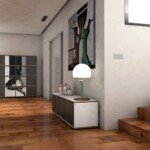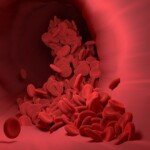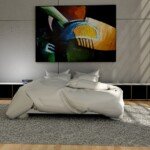Introduction: Embrace personal style with custom 3D printed hair accessories
Imagine a hair clip that perfectly reflects your personality – leek, artistic or whimsical, but durable enough to last several years. Thanks to progress Metal 3D printingcreating custom accessories like hairpins has never been easier to access. At Greatlight, we will use industrial-grade metal 3D printing designers, amateurs and fashion enthusiasts to transform their horizons into functional art. In this guide, we will explore how to design, prototype and make your own metal hairpins and highlight why this technology revolutionizes customization.
Why 3D printing of metal for hairpins?
Hairpins require durability, comfort and aesthetic appeal. Traditional plastic 3D printing often lacks strength, while traditional metalworking fights complex geometry. The gap between metal 3D printing bridges:
- Power and light: Materials such as titanium, stainless steel or aluminum alloys can provide robustness without volume.
- Free design: Complex lattice patterns, organic curves or embedded patterns are easy to achieve.
- Hypoallergenic: Metals like polished titanium reduce the risk of skin irritation.
Greatlight’s expertise ensures that your design is more than just beautiful, it’s designed for everyday clothing.
Step by step: Design your hairpin
1. Concept creation
- sketch: Defines the functions of the clip (e.g., beret, buckle) and style (geometry, floral, abstract).
- Size and Ergonomics: The clip should hold the hair firmly; avoid sharp edges. Ideal thickness: 1.5–3mm.
2. Digital Modeling
- software: Use beginner-friendly tools for Tinkercad or Fusion 360 (such as Fusion 360).
- Key Check:
- Ensure that moving parts (e.g., hinge mechanism) have a clearance of 0.2-0.5mm.
- Apply fillets to distribute comfort and pressure.
- Optimize the topology to minimize material use.
3. Document preparation
Export your design STL or step file. Greatlight engineers commented on it for print feasibility and suggested tweaks, such as:
- Add support for overhangs.
- Adjust the wall thickness during printing to improve thermal elasticity.
Why do you need to cooperate with Greatlime to produce?
For metal hairpins, professional printing and finishing are not commercially acceptable. GRESTLIGHT Delivery:
- Industrial quality: Advanced DML (Direct Metal Laser Sintering) machine fuses metal powder and fuses one layer with accuracy (±0.05mm).
- Material versatility: Choose from stainless steel 316L (corrosion resistant), titanium (lightweight) or custom alloys.
- End-to-end post-processing:
- polishing: Similar to mirror or satin finish.
- plating: Gold, rose gold or rhodium coating.
- Coloring: Vibrant tones.
- assembly: Integrate springs or buttons.
- Speed to the market: Prototype within 3-5 days; bulk production zoom.
Not just printers – we handle Thermal stress management, pore controland detailed inspections were conducted to ensure that each clip complies with jewelry-grade standards.
Real-world applications and custom ideas
- Personalized heirloom: Embed abbreviation, birthstone (set by post-print) or cultural symbol.
- Theme collection: Natural style leaves, futuristic grid or art deco pattern.
- Business potential: Brand creates signature lines with unique textures – eg, matte scales for grip.
Conclusion: Where art and engineering fit the engineering
Design your own 3D printed hairpins to blend creativity with cutting-edge technology. From sketching to final polishing, Greatlight transforms your concept into a lasting metal masterpiece. With unrivalled expertise in professional metal 3D printing and completion, we ensure that your accessories are not only used to, but also innovative wearable proofs. Ready to create it? Upload your designs on Greatlight and experience precise manufacturing tailored to your horizon.
FAQ: Metal 3D Printed Hair Pinch
Q1: Can metal 3D printing handle exquisite designs?
Absolutely. DMLS technology reduces complex structures to 0.3mm details. Greglight’s support structure, even in a lace-like pattern, can prevent distortion.
Q2: Which metal is the safest?
Titanium and polished stainless steel 316L are hypoallergenic. We recommend electropolishing to eliminate microscopic holes that capture stimuli.
Q3: How to make sure the clip holds the hair firmly?
Design spring hinges or teeth with soft serrated teeth. Greglight can integrate pre-tested commercial springs during assembly.
Q4: What is the typical turnover time?
The prototype takes 3-5 days; batch orders run for 1-2 weeks, including completion. An expedited selection is available.
Q5: Is the color finish durable?
Yes! Chemically bonded to titanium anodizes, resisting scratches. Coating coatings (gold, silver) were subjected to adhesion test.
Q6: Can I copy a broken old-fashioned clip?
really. Send us the original; we scan 3D and redesign it in CAD for metal printing.
Question 7: How cost-effective is small batch production?
3D printing eliminates molding costs. Greatlight’s competitive pricing enables a 50-unit batch economy for small brands.
Bold design. Unique wear.
Greatlight combines artistic possibilities with engineering rigor in metal 3D printing. Customize your attachment row or one-of-a-kind piece – Subscribe to your design for a quote!


















